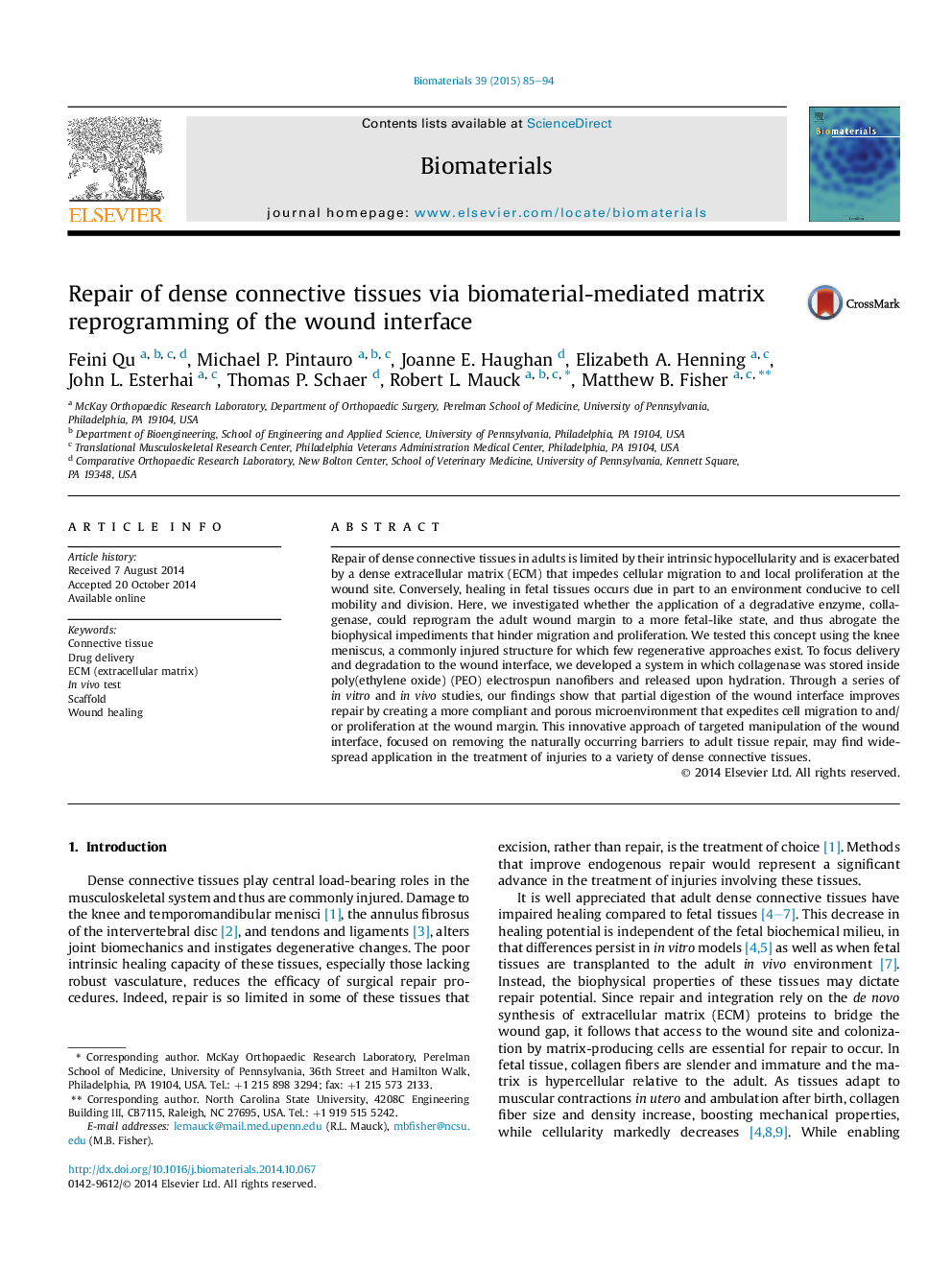| Article ID | Journal | Published Year | Pages | File Type |
|---|---|---|---|---|
| 6486341 | Biomaterials | 2015 | 10 Pages |
Abstract
Repair of dense connective tissues in adults is limited by their intrinsic hypocellularity and is exacerbated by a dense extracellular matrix (ECM) that impedes cellular migration to and local proliferation at the wound site. Conversely, healing in fetal tissues occurs due in part to an environment conducive to cell mobility and division. Here, we investigated whether the application of a degradative enzyme, collagenase, could reprogram the adult wound margin to a more fetal-like state, and thus abrogate the biophysical impediments that hinder migration and proliferation. We tested this concept using the knee meniscus, a commonly injured structure for which few regenerative approaches exist. To focus delivery and degradation to the wound interface, we developed a system in which collagenase was stored inside poly(ethylene oxide) (PEO) electrospun nanofibers and released upon hydration. Through a series of in vitro and in vivo studies, our findings show that partial digestion of the wound interface improves repair by creating a more compliant and porous microenvironment that expedites cell migration to and/or proliferation at the wound margin. This innovative approach of targeted manipulation of the wound interface, focused on removing the naturally occurring barriers to adult tissue repair, may find widespread application in the treatment of injuries to a variety of dense connective tissues.
Related Topics
Physical Sciences and Engineering
Chemical Engineering
Bioengineering
Authors
Feini Qu, Michael P. Pintauro, Joanne E. Haughan, Elizabeth A. Henning, John L. Esterhai, Thomas P. Schaer, Robert L. Mauck, Matthew B. Fisher,
